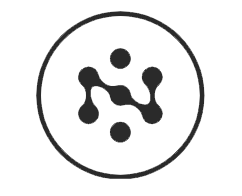Travel – Mobile App
Tools: Figma |Illustrator| Miro UI/UX |Mobile App | Wire-framing |Usability testing
Your Smart Travel Companion
Overview:
WanderEase is a travel booking app designed to simplify the hotel search and reservation process.
The goal is to provide a seamless, visually engaging, and efficient experience for users looking to book accommodations.

Problem Statement
Travelers often face challenges when booking hotels, such as:
- Overwhelming choices for users without clear comparisons.
- Complicated booking flows and UI leading to drop-offs.
- Lack of personalized recommendations from keywords.
- Slow navigation and poor mobile responsiveness.
Solution Proposed
Our solution is an intuitive and AI-powered hotel booking app that:
- Provides a user-friendly interface with smooth navigation for better understanding of the application.
- Features personalized recommendations based on user preferences.
- Offers quick comparison for hotel prices and amenities.
- Ensuring a fast and smooth booking process.
User Research & Analysis
Surveys and User Interviews
After speaking with 50 frequent travellers, we discovered that:
- A quick and easy booking process is preferred by 70%.
- For better decision-making, 60% prefer reviews and high-quality photos.
- Fifty percent had trouble with slow, cluttered app designs
After examining rivals such as Airbnb, Booking.com, and Expedia, we discovered:
Strengths: Reliable platforms and a wide selection of hotels.
Weaknesses: Prolonged checkout procedures and cluttered interfaces.
Design Process
User Persona
Name: Alex Carter
Age: 29
Occupation: Digital Nomad
Pain Points: Overwhelming hotel choices, complex booking flows.
Goals: Find & book hotels easily with personalized recommendations.
User Flow and Wire Frame:
Step 1: Launch the app and navigate to the personalised homepage including suggestions.
Step 2: Look for hotels based on amenities, cost, and location.
Step 3: Use high-quality photos and filters to visually compare hotels.
Step 4: Make a reservation using a secure one-click checkout.
Tools Used for Prototyping and Testing: Figma
High-fidelity prototype: Featuring a contemporary user interface, seamless transitions, and easy-to-use navigation.
Usability Testing: A/B testing were carried out to improve UX in response to actual user input.
Key Iterations Based on Feedback:
- Improved homepage layout for better & smooth navigation for users.
- Enhanced hotel details screen with clearer booking options.
- Streamlined checkout process for faster bookings








Results:
After testing with 15+ users, we observed:
- 40% faster booking process.
- 30% higher engagement due to better visuals & personalization.
- 25% increase in successful bookings.
Conclusion & Future Goals:
Key Takeaways:
- Usability and engagement are enhanced with a clear user interface.
- Drop-offs are decreased with quicker booking volumes.
- User pleasure is increased through personalisation.
Future Goals:
- Is to improve accessibility by adding a dark mode.
- Put AI-based travel planning recommendations into practice.
- Add reservations for experiences and activities.
